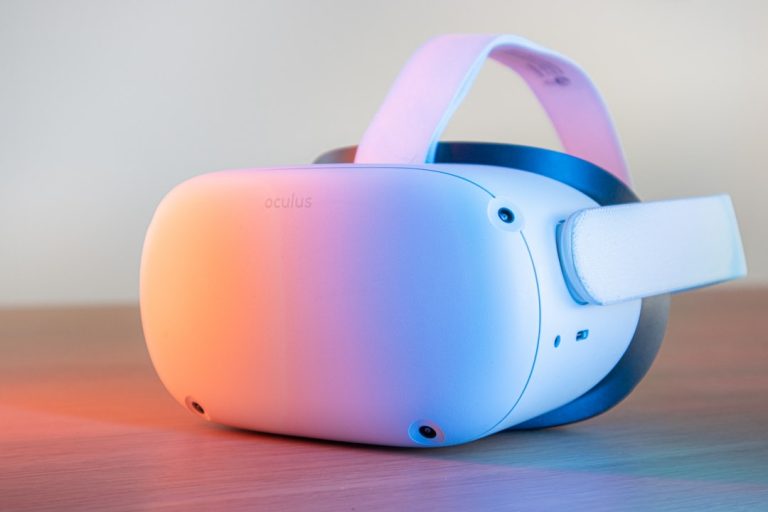Radiologic technology is a vital field within the healthcare system, encompassing a range of imaging techniques that allow for the visualization of the internal structures of the body. This discipline employs various modalities, including X-rays, computed tomography (CT), magnetic resonance imaging (MRI), and ultrasound, to assist healthcare professionals in diagnosing and treating medical conditions. Radiologic technologists are trained specialists who operate imaging equipment and ensure that high-quality images are produced while prioritizing patient safety.
Their expertise not only aids in accurate diagnosis but also plays a crucial role in guiding treatment decisions, making them indispensable members of the healthcare team. The significance of radiologic technology extends beyond mere image acquisition; it embodies a blend of science, art, and patient interaction. Technologists must possess a deep understanding of human anatomy and physiology, as well as the technical skills required to operate complex machinery.
Furthermore, they must communicate effectively with patients, explaining procedures and alleviating any concerns. This multifaceted role highlights the importance of radiologic technology in modern medicine, where precision and clarity in imaging can significantly influence patient outcomes. As we delve deeper into the evolution and impact of this field, it becomes evident that radiologic technology is not just a tool but a cornerstone of contemporary healthcare.
Key Takeaways
- Radiologic technology plays a crucial role in the diagnosis and treatment of various medical conditions.
- The evolution of radiologic technology has significantly improved the accuracy and efficiency of medical diagnosis.
- Radiologic technology is essential in guiding treatment plans and monitoring the progress of patients.
- Advancements in radiologic technology have led to the development of more precise and less invasive imaging techniques.
- The future of radiologic technology holds promise for further improvements in patient care and medical outcomes.
The Evolution of Radiologic Technology in Medicine
Advancements in Radiation Physics and Safety Protocols
However, as understanding of radiation physics advanced, so too did the techniques and safety protocols associated with their use. Over the decades, radiologic technology has evolved dramatically, incorporating innovations that have transformed how medical professionals approach diagnosis and treatment.
The Introduction of Advanced Imaging Modalities
As the 20th century progressed, the introduction of advanced imaging modalities such as CT and MRI further revolutionized the field. CT scans provided cross-sectional images of the body, enabling clinicians to detect abnormalities with unprecedented clarity. Meanwhile, MRI offered a non-invasive alternative that utilized magnetic fields and radio waves to produce detailed images of soft tissues.
A Continuous Pursuit of Excellence in Patient Care
These advancements not only enhanced diagnostic accuracy but also expanded the scope of conditions that could be effectively evaluated. The evolution of radiologic technology reflects a continuous pursuit of excellence in patient care, driven by a commitment to improving diagnostic capabilities and ensuring patient safety.
The Importance of Radiologic Technology in Diagnosis

Radiologic technology plays an essential role in the diagnostic process, serving as a critical tool for identifying a wide array of medical conditions. The ability to visualize internal structures allows healthcare providers to detect diseases at their earliest stages, often before symptoms manifest. For instance, mammography is a specialized form of X-ray imaging that has proven invaluable in the early detection of breast cancer, significantly improving survival rates.
Similarly, CT scans are frequently employed to diagnose conditions such as tumors, fractures, and internal bleeding, providing detailed images that guide clinical decision-making. Moreover, the integration of radiologic technology into routine medical practice has facilitated more accurate diagnoses across various specialties. For example, in neurology, MRI has become the gold standard for assessing brain disorders, including strokes and tumors.
The precision offered by advanced imaging techniques allows for tailored treatment plans that address specific patient needs. As healthcare continues to evolve towards a more personalized approach, the importance of radiologic technology in diagnosis cannot be overstated; it serves as a bridge between clinical suspicion and definitive diagnosis, ultimately enhancing patient outcomes.
The Role of Radiologic Technology in Treatment
| Role of Radiologic Technology | Treatment |
|---|---|
| Diagnosis | Identifying and diagnosing medical conditions and diseases |
| Therapy | Using radiation to treat cancer and other medical conditions |
| Monitoring | Tracking the progress of treatment and the response of the patient |
| Guidance | Assisting in guiding medical procedures such as biopsies and surgeries |
Beyond its diagnostic capabilities, radiologic technology also plays a pivotal role in the treatment of various medical conditions. Interventional radiology is a subspecialty that utilizes imaging guidance to perform minimally invasive procedures, offering patients alternatives to traditional surgery. Techniques such as angioplasty, stent placement, and biopsies are performed with precision using real-time imaging modalities like fluoroscopy and ultrasound.
This approach not only reduces recovery times but also minimizes complications associated with open surgical procedures. Furthermore, radiologic technology is integral to radiation therapy for cancer treatment. High-energy radiation is used to target and destroy cancerous cells while sparing surrounding healthy tissue.
Advanced imaging techniques are employed to accurately locate tumors and monitor treatment progress, ensuring that radiation is delivered precisely where it is needed. The synergy between diagnostic imaging and therapeutic interventions exemplifies how radiologic technology enhances patient care by providing comprehensive solutions that address both diagnosis and treatment.
The Advancements in Radiologic Technology
The field of radiologic technology has witnessed remarkable advancements over recent years, driven by technological innovation and research. Digital imaging has largely replaced traditional film-based methods, resulting in faster image acquisition and improved image quality. Digital images can be manipulated for better visualization, allowing radiologists to enhance specific areas for more accurate interpretation.
Additionally, the advent of picture archiving and communication systems (PACS) has revolutionized how images are stored and shared among healthcare providers, facilitating collaboration and expediting diagnoses. Moreover, artificial intelligence (AI) is beginning to play a transformative role in radiology. Machine learning algorithms are being developed to assist radiologists in interpreting images more efficiently and accurately.
These AI systems can analyze vast amounts of data to identify patterns that may be overlooked by human eyes, thereby enhancing diagnostic accuracy and reducing the likelihood of errors. As these technologies continue to evolve, they promise to further streamline workflows and improve patient outcomes by enabling faster and more precise diagnoses.
The Future of Radiologic Technology in Medicine

Advancements in Molecular Imaging
The future of radiologic technology holds great promise, driven by ongoing research and innovation. One area that is poised for significant growth is molecular imaging, which enables the visualization of biological processes at the cellular level. This emerging field has tremendous potential for early disease detection and real-time monitoring of treatment responses.
Personalized Medicine and Expanded Access
As our understanding of disease mechanisms deepens, molecular imaging is likely to become an essential tool for personalized medicine. This approach involves tailoring treatments to individual patient profiles, leading to more effective care. Furthermore, advancements in portable imaging technologies are expanding access to radiologic services in underserved areas. Handheld ultrasound devices and mobile X-ray units are already making a significant impact in remote locations where traditional imaging facilities may be lacking.
Democratization of Healthcare through Accessible Imaging
The democratization of healthcare through accessible imaging solutions can lead to earlier diagnoses and improved health outcomes for populations that have historically faced barriers to care. As we continue to innovate and adapt radiologic technology, it is clear that it will play a vital role in meeting the changing needs of patients and healthcare providers alike.
The Impact of Radiologic Technology on Patient Care
The impact of radiologic technology on patient care is profound and multifaceted. By providing critical information that informs clinical decision-making, radiologic imaging enhances the overall quality of care patients receive. Timely diagnoses facilitated by advanced imaging techniques can lead to earlier interventions, which are often associated with better prognoses.
For instance, detecting conditions such as cancer or cardiovascular diseases at an early stage can significantly improve treatment outcomes and survival rates. Moreover, the patient experience is also enhanced through advancements in radiologic technology. Modern imaging modalities are designed with patient comfort in mind; for example, open MRI machines reduce feelings of claustrophobia for patients who may be anxious about traditional closed systems.
Additionally, improved imaging techniques often require less time for image acquisition while maintaining high-quality results, minimizing patient discomfort during procedures. As healthcare continues to prioritize patient-centered care, the role of radiologic technology will remain central in ensuring that patients receive accurate diagnoses and effective treatments while experiencing compassionate care throughout their medical journey.
If you’re interested in learning more about how websites handle your personal information, particularly in the realm of rad tech, you might find the privacy policies of related sites useful. For instance, you can review the privacy policy of Bongoc, which outlines how they manage user data, which is crucial in understanding the security measures in place when dealing with technology-related information. You can read more about their specific policies by visiting Bongoc’s Privacy Policy. This can give you a clearer idea of how your data is protected and utilized in a tech-focused environment.
FAQs
What is a rad tech?
A rad tech, short for radiologic technologist, is a healthcare professional who specializes in performing diagnostic imaging examinations, such as X-rays, CT scans, and MRI scans.
What does a rad tech do?
Rad techs operate imaging equipment to produce images of the body for medical diagnosis. They work closely with radiologists and other healthcare professionals to ensure accurate and high-quality images.
What are the educational requirements to become a rad tech?
To become a rad tech, individuals typically need to complete an accredited educational program in radiography, which can result in a certificate, associate’s degree, or bachelor’s degree. They must also be licensed or certified in most states.
What are the key skills needed to be a successful rad tech?
Key skills for rad techs include attention to detail, technical proficiency in operating imaging equipment, communication skills for working with patients, and the ability to work effectively as part of a healthcare team.
What are the career prospects for rad techs?
The demand for rad techs is expected to grow as the healthcare industry continues to expand. Rad techs can work in hospitals, imaging centers, physician offices, and other healthcare facilities.















